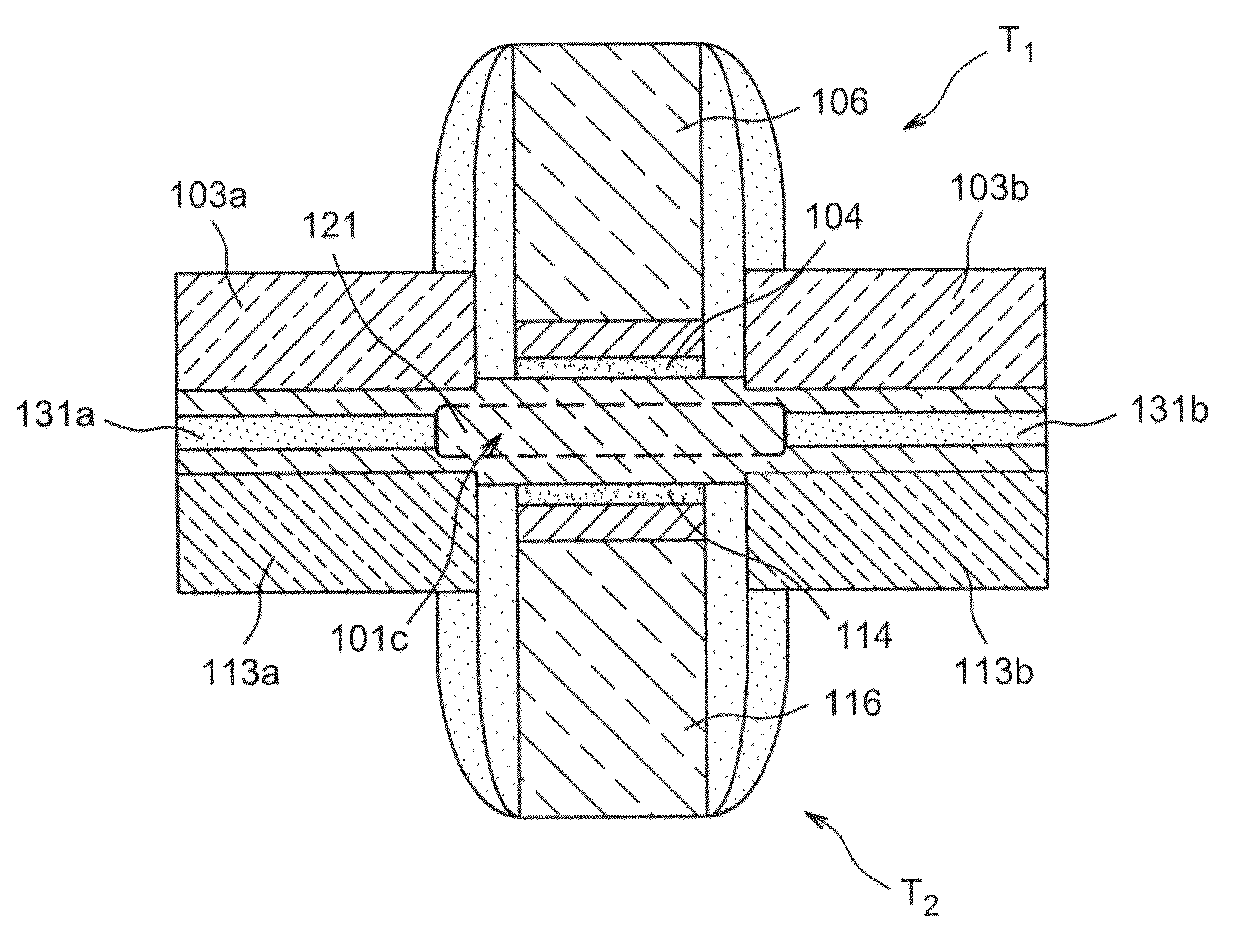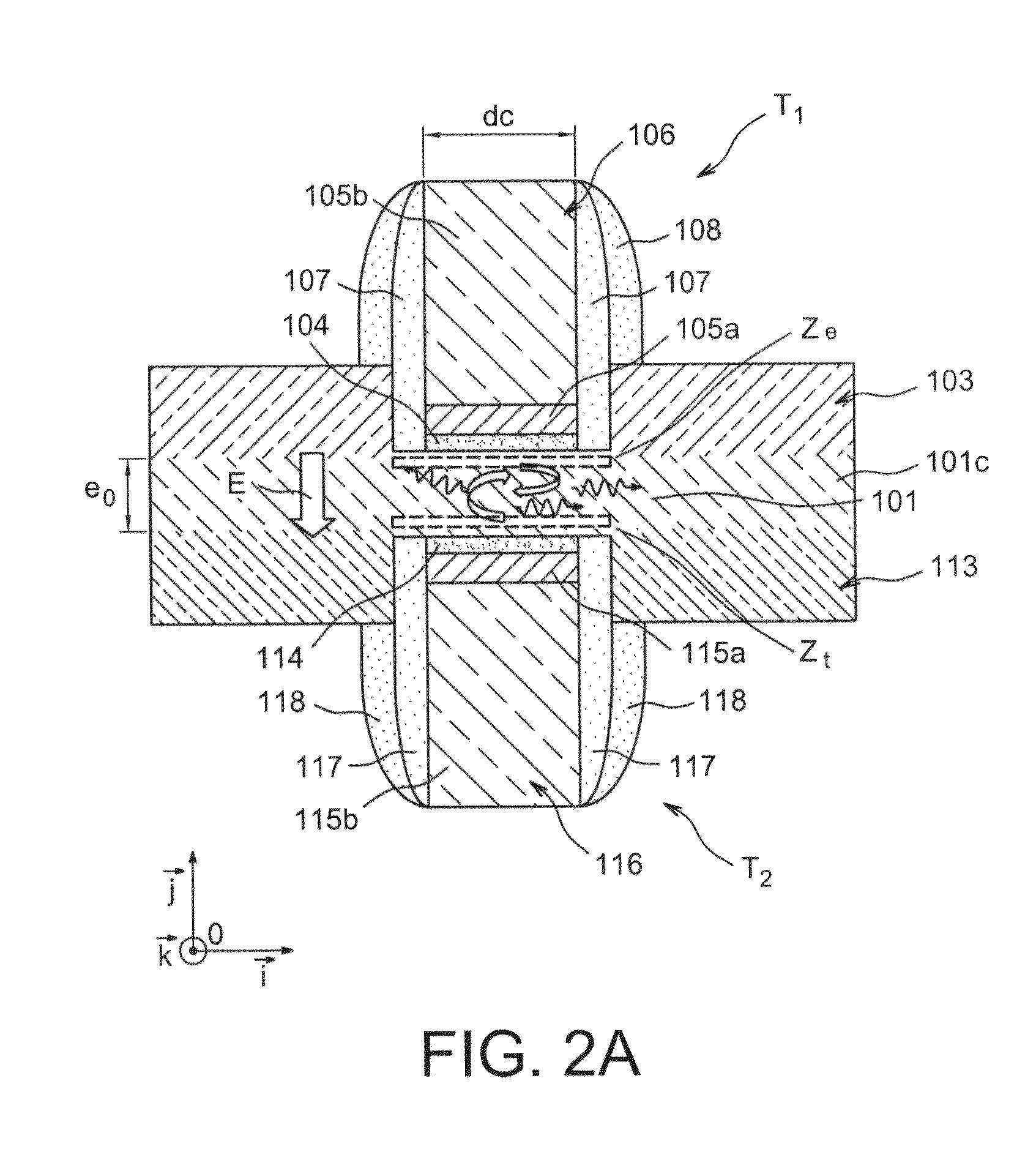Light-emitting device with head-to-tail P-type and N-type transistors
a technology of light-emitting devices and transistors, applied in the field of microelectronic devices, can solve the problems of limited efficiency of recombining charge carriers
- Summary
- Abstract
- Description
- Claims
- Application Information
AI Technical Summary
Benefits of technology
Problems solved by technology
Method used
Image
Examples
Embodiment Construction
[0011]The present invention relates to a microelectronic light-emitting device including at least one first transistor having source and drain regions formed in at least one first doped semiconductor N region and one gate, at least one second transistor having source and drain regions formed in at least one second doped semiconductor P region and one gate, where the gate of the first transistor and the gate of the second transistor are positioned opposite one another, either side of a region including a given region made of at least one intrinsic and / or undoped semiconductor material.
[0012]Such a device enables a current of holes and a current of electrons to be adjusted independently.
[0013]In a semiconductor region the electrons and the holes generally do not have the same ability to move or the same mobility. In a light-emitting diode only a single current flows, and the electron flow is therefore equal to the flow of holes. The latter, which generally move slowly, can limit the r...
PUM
 Login to View More
Login to View More Abstract
Description
Claims
Application Information
 Login to View More
Login to View More - R&D
- Intellectual Property
- Life Sciences
- Materials
- Tech Scout
- Unparalleled Data Quality
- Higher Quality Content
- 60% Fewer Hallucinations
Browse by: Latest US Patents, China's latest patents, Technical Efficacy Thesaurus, Application Domain, Technology Topic, Popular Technical Reports.
© 2025 PatSnap. All rights reserved.Legal|Privacy policy|Modern Slavery Act Transparency Statement|Sitemap|About US| Contact US: help@patsnap.com



